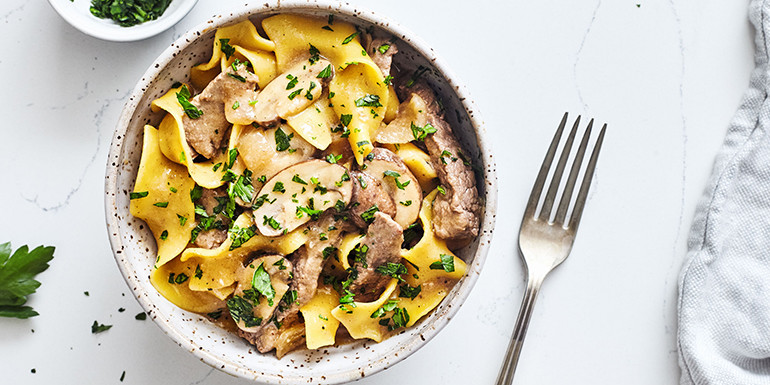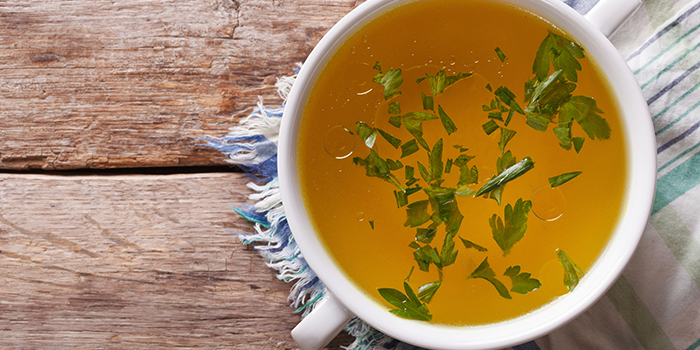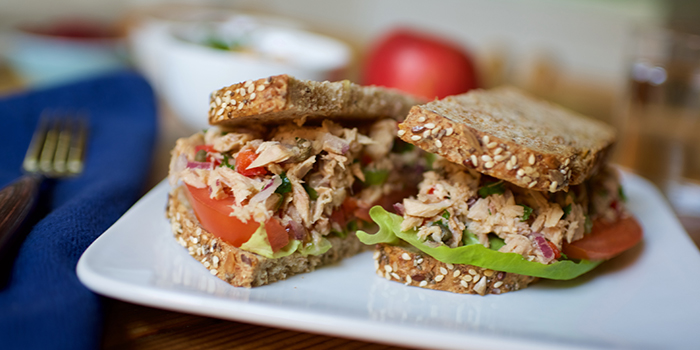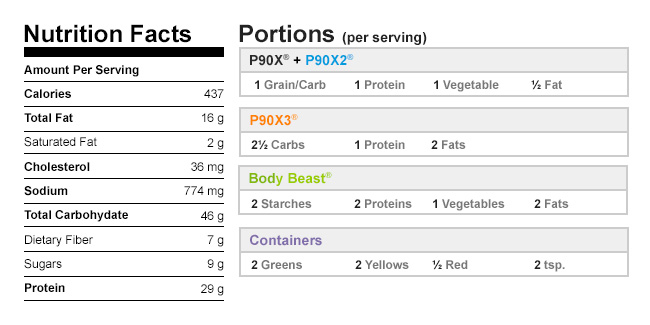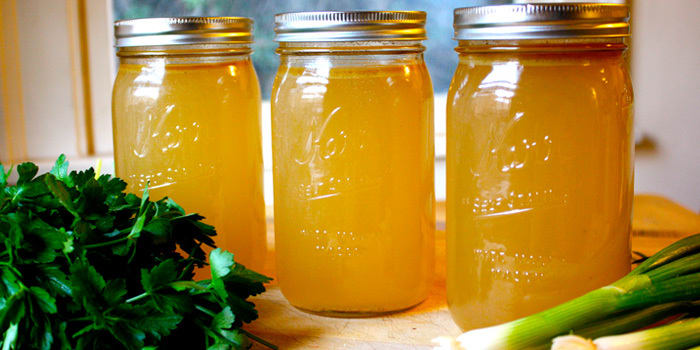
If you’ve always believed that chicken soup truly heals the body (and soul), you’re in luck. “Brothing,” or sipping nutrient-rich bone broth, is on the rise. Everyone everywhere is talking about how bone broth helps joint pain and inflammation. How it not only fights colds and flu, but also prevents dehydration, aids in digestive healing, makes your skin, hair and nails prettier, and even reduces cellulite.
With its recent trendy rise
—a two-second web search will result thousands of articles, blogs, recipes, and even books like
Nourishing Broth by nutritionists Sally Fallon Morrell and Kaayla T. Daniel PhD
—restaurants across the country now serve broth by the cupful, with devoted sippers drinking it in to-go cups instead of tea or coffee. Bone sales have gone up at meat counters, and more and more people are simmering pots of broth at home to savor throughout the day. Paleo devotees, nutritionists, celebrities, and even some sports personalities have come out as serious broth fans.
Is this just another magical elixir being touted as the ultimate cure-all: Juice one day, broth another? Not really. Simmering beef, chicken, pork, or fish bones and parts for long hours with herbs, vegetables and other healthful additives has been a staple in many cultures since the beginning of time, or at least since someone put animal parts and water in a turtle shell and cooked it over fire. Nearly every civilization has some sort of stock or broth, and not just because it tastes good and is inexpensive to make, but because it’s filled with health benefits, a fact that’s becoming more and more scientifically supported.
“When we were sick as children, our parents gave us soup to drink. This is embedded in our culture and instincts,” says Dr. Liz Lipski PhD, a certified clinical nutritionist and Academic Director of Nutrition and Integrative Health programs at Maryland University, and founder of
Innovative Healing. “We know that soup is good for us, easy to digest, and it provides fluids and nutrients. And making broth is typical of many cultures, whether Asian, South American, or European.”
It’s true. Many Asian cultures serve broth on its own or as a base for soups, porridge, and sauces. Kitchens all over Japan, Korea, and Thailand have pots filled with bones, cartilage, and vegetable scraps bubbling away on the stove. It’s served in cups before and after meals, or whenever someone needs a middle-of-the-day pick-me-up. In Chinese medicine, a good fortifying broth is often prescribed to boost the immune system, support digestive systems and “build blood,” or encourage the production of new blood cells in the body and fortify them with iron, vitamins and folic acid. Because we are made of the same things
—bones, marrow, minerals
—Chinese practitioners use nutrient-rich broth to help nourish the kidneys, liver, lungs, and spleen. It’s believed to help build our qi, or our life force, our essence.
In South America, there’s a proverb that “good broth will resurrect the dead.” In Bolivia, broth made with beef bones and cow’s feet, which adds a good amount of natural gelatin, is added to many recipes. In Brazil, chicken and fish broths are the base for stews and soups. Clarified broths, often called consommés, have been served and sipped in European households since the Middle Ages. Moshe ben Maimon, a 12th century Egyptian physician and philosopher, wrote in a treatise that chicken soup helped heal respiratory tract symptoms. There have been numerous scientific studies to back that up, including one from the
American College of Chest Physicians that found chicken soup was useful in reducing upper-respiratory inflammation, the cause of most discomfort when someone has a cold. Turns out mom and grandma really do know best.
Lipski, who also authored several books on digestive health, including
Digestive Wellness and
Digestive Connection, often recommends soups and broths to people who are feeling debilitated, or those with bone loss and joint problems. “Broths don’t have a lot of calories, but they do contain a variety of beneficial nutrients and minerals, including free amino acids, calcium, glycine, proline, magnesium, potassium and fluoride,” she says. “When animal bones are simmered for 12 to 24 hours, it’s like a liquid mineral supplement.”
What do all of these vitamins and minerals do? Amino acids like glycine and proline help build muscle and lessen inflammation, and minerals and sodium from a well-salted homemade broth help battle dehydration. You can see why athletes are fans. Floride is good for your teeth, potassium and calcium are good for your bones. Broth is a great source of collagen, the base materials for our cells, which is integral to regeneration and healing. And when made properly, i.e. with good bones with cartilage and marrow, the natural gelatin produced from a slow-simmered broth helps things like leaky gut syndrome, something that’s often associated with everything from food allergies to asthma, chronic fatigues and more. Leaky gut is when the intestinal lining of your stomach becomes too permeable and allows undigested food particles and bacteria to leak into the bloodstream. Nutritionists believe the gelatinous nature of bone broth literally helps fill the holes allowing the body to absorb and digest nutrients properly. Soup, it does a body good.
Like Lipski, Yvonne Kohsel, a California-based corporate wellness trainer and nutritionist, has been turning her clients on to broth for years. Sipping liquid is a palatable and easy way to digest all of these valuable vitamins and minerals, and she’s seen it work wonders on people of all ages. “Whether 35 or 80 years old, everyone suffers from something, from diabetes to prior injuries, weekend warriors or the actively aging,” she says. “I bring a thermos full of broth each week for them to try.
One client, a retired trauma nurse who has been taking glucosamine supplements for joint pain but wasn’t seeing results, started improving once broth became a staple in her daily diet. “It’s also easy to digest, so it’s perfect for people with sensitive stomachs or conditions like celiac disease,” says Kohsel.
That’s how celebrity chef Debbie Lee got hooked. She’s long been sipping
seolleongtang, Korean broth made with ox and beef bones, brisket, and other meaty cuts, in Korean cafes or in her grandmother’s kitchen. But she only recently got turned on to broth as a meal supplement or something to sip instead of coffee. “Go to any noodle house or cafe in Koreatown, and they aren’t going to offer an appetizer,” says the Food Network personality and cookbook author. “They bring you a cup of broth. It’s so satisfying and nourishing.” Now it’s her go-to for health benefits.
Lee always knew broth made her feel good, but now she had something to back it up. Not only does she start almost every day by drinking her chicken or beef broth
—“It’s my new coffee,” she says
—she sips it throughout the day, and even sips it at night instead of a cocktail or glass of wine.
With the help of her nutritionists, Lee created a “bone broth cleanse” for
Mind Body Fork, her new Southern California meal delivery service. Her two broths
—one beef, one chicken
—are made from grass-fed animals, along with vegetables like daikon, ginseng, and seaweed. “As a cook, you often go back to your family roots,” says Lee. “For me, chicken soup was always with ginseng. And when you add things like ginger and ginseng, you’re adding immunity-boosting elements, and it makes you feel a bit refreshed. Plus, it just tastes good.”
From a culinary standpoint, the major difference between stock, something most people make with leftover chicken bones, aromatics, and vegetables, and broth is the cooking time. “Stock is like the preliminary stage of broth,” says Lee. Roasting the bones adds an enhancement of flavor, and by simmering it overnight instead of just a few hours, it fortifies the broth releasing all of the nutrients. And a good broth will be gelatinous when cooled.
There really is no one recipe, but most broths follow those rules, including those served at
Brodo, chef Marco Canora’s broth-only take-out window in New York, which put a huge spotlight on the trend;
Belcampo Meat Co. in Marin County and Los Angeles; and
Asian Box, a fast-casual organic bowl restaurant in California.
“Our broth is a combo of bones and skin from beef, pork, lamb, and poultry, which we simmer in water and apple cider vinegar for 24 to 36 hours,” says Belcampo Meat Co. president Bronwen Hanna-Korpi. You can get cups of broth for around $3 a cup as well as frozen broth for $10 a quart to take home. “The skin adds a nice richness and texture. After the broth simmers, we lightly salt it and strain to remove fat.” By simmering it for so long, the bones leach out all the nutrients they can offer
—the proteins, minerals, and collagen
—so it has all the benefits in a healthy, easy-drinking package.
That’s why it’s most important to start with great ingredients. Belcampo Meat Co. raise their own organic, grass-fed animals for their butcher shops, and using those bones and parts as a building block for broth is integral to its health benefits. After all, if you’re simmering bones and other ingredients to their most concentrated form, starting with hormone-free, organic and grass-fed ingredients, is crucial. It’s what makes these “gourmet” broths different than, say, what’s found in cans and boxes on grocery shelves. You don’t really know the ingredients in most of those, plus the sodium content can be sky high.
When New York-based food writer Kelly Dobkin came down with debilitating vertigo a few years ago, it turns out her homemade bone broth was what helped the most. “I went to every doctor and had every imaginable test. An allergist, endocrinologist, cardiologist, neurologist, you name it. This went on for months. No one could figure out what was wrong with me,” she says. And then her acupuncturist suggested that her ailment was extreme dehydration, and told Dobkin to start drinking “bone marrow soup.” Even in the middle of a hot East Coast summer, she drank broth every day for six months. Not only was she getting the hydration she needed, but there were other health benefits, like leveling out her blood sugar between meals. “All the cellulite on my body pretty much vanished after one month of drinking broth, too,” she adds.
As a senior editor for Zagat.com, where she reports on food trends in New York and across the country, Dobkin is excited to see the enriching elixir becoming more popular. When Canora opened Brodo in the East Village, one of the first to specialize in broth only, she was naturally drawn to it and realized its potential.
“My acupuncturist reminded me that the first thing you put in your body is important to your health, digestion and immune system,” she says. “And a hot ‘blood-building’ liquid is ideal.” While she doesn’t carry it around like a cup of coffee, Dobkin has tried and likes Brodo’s broth, but she still makes hers at home. “I have a feeling it’s going to get a lot easier to find the high-quality homemade kind in the coming years.”
(article from Beachbody &
Lesley Balla )
